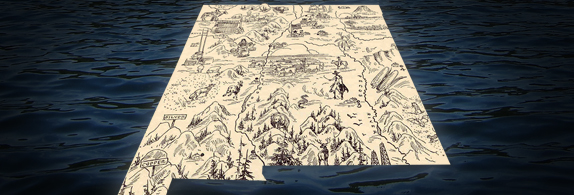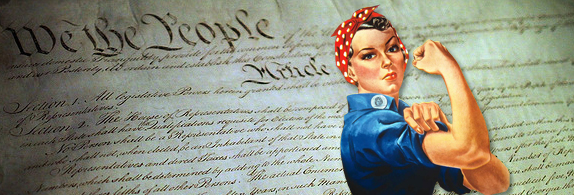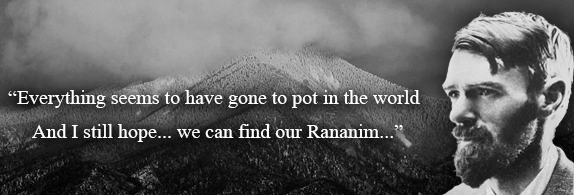
Were they lying to us all along?
Did Albuquerque’s leadership community know in the 1950s that the claim that the city sat upon a vast aquifer the size of Lake Superior was outright PR fraud to lure new residents suffering in the middle of one of the worst droughts on record? Was it all a purposeful con?
Or was the leadership community just abysmally stupid?
It seems that both are good possibilities.
In 1953, one of America’s most distinguished hydrologists, C.V. Theis, told the Chamber of Commerce that almost nothing was known about the aquifer under the city. As he said, “practically nothing is known about the characteristics of the Albuquerque water supply, pumpage of individual wells, lowering of water level, changes in quality – effect of industrial wells on municipal pumping.” Citing an engineering report of 1952, Theis said that “Albuquerque is drawing on a community account and no one knows what the bank balance is. It is in the embarrassing position of an ostrich in its traditional pose.”
The Theis talk is referenced numerous places. It’s in the footnotes of a study of groundwater in the arid west. And it can be found in its entirety here.
The talk is a stunner for those who know something about the cavalier attitude of Albuquerque leaders toward our aquifer. They’ve mostly talked about it as if they actually knew something about it, which they didn’t. It’s particularly irksome to think the fable of Albuquerque’s underground Lake Superior was used to sell potential new businesses and residents a bill of goods. Even State Engineer Steve Reynolds, the most powerful water czar in New Mexico during the modern era, said in a 1980 column in the Albuquerque Tribune (via High Country News)that Albuquerque could happily accommodate 1.5 million people and was “probably better situated with respect to water than any large city in the Southwest.”
The Lake Superior Myth floated along until 1993 when the USGS conducted a scientific survey of Albuquerque’s aquifer at the request of Mayor Louis Saavedra. It found no big lake at all, but rather a dwindling water supply that wasn’t recharging from natural runoffs and flows at anywhere near the rate of its depletion. But dry times along the Rio Grande were known since the 1920s. And by the 1930’s plans were being drawn up to divert water from tributaries of the San Juan into the Rio Grande. It was general knowledge that New Mexico was an arid state. The project dragged on and it wasn’t until 1964 that the major tunnel from Southern Colorado was dug to supply new water to the Rio Grande. It began flowing in the mid-1970s, but wasn’t used for drinking until 2008. And even then the new San Juan/Chama river water only supplied about 40% of the city’s drinking water, the rest coming from the beleaguered aquifer.
So really, in the eyes of rational, realistic, and honest people the idea of Albuquerque sitting on top of a gigantic lake of water wasn’t just a stray and crazy idea. It was false advertising, smoke and mirrors. Albuquerque was sold to the world on the basis of something it didn’t have.
When C.V. Theis told the Albuquerque Chamber of Commerce they really had no idea about how much water they had in the bank, so to speak, he was doing so in the first years of what would become the horrible drought of 1952 to 1956 which proved to be one of the most severe dry times on record. Oddly, it followed an unusually wet period in the l940s, one that’s often depicted in history books by photographs of heavy flooding on North Fourth Street.
The Chamber invited Theis to give his views on the city’s ground water. Before that Albuquerque had, Theis acknowledged, “never expressed any interest in the status of its ground water supply and had never asked a question about it.”
By 1953 Theis was a renowned expert on ground water. If anybody could give the Albuquerque Chamber the real scoop, it was him. After he died 1987 the American Institute of Hydrology created the Charles Vernon (C.V.) Theis award to recognize contributions made in the study of groundwater hydrology. Theis is considered the founding father of the subject.
So what is the overall implication of Theis’s talk and the apparent complete disregard of what this renowned expert had to say? Even though he said that we knew nothing about our aquifer, city leaders went on inventing and refining the Lake Superior come-on. Was it just denial? Was it malicious falsehood? Was it a case of not hearing what you didn’t want to hear?
One implication is clear however. Albuquerque has a long history of denying water problems. The foot dragging and obfuscating over the gigantic KAFB jet fuel leak these days is in keeping with the happy face bravado of the past. It’s not unusual, our history tells us, for our ruling elite to disregard facts and invent fictions to keep Albuquerque as a money making venture.
For so-called “experts” to tell people that there’s nothing to worry about when it comes to the spill is really like the hogwash of the Lake Superior con. There’s a lot to worry about – maybe billions of dollars in cost, maybe a century of cleanup for a contamination event of that magnitude. And, “experts not withstanding,” of course the jet fuel plume IS moving toward the city’s most productive well field, or actually is being sucked into it. And we’re still not clear how fast that’s happening or even exactly where the edge of the plume might be.
Theis described this process of underground water movement in well fields 61 years ago in his 1953 talk. Each well has a “cone of depression” around it. “When a well is pumped, water levels in its vicinity fall. This produces a slope of the water table in all directions toward the well and provides the force driving the water into the well.” And we might add, provides the “force driving” contamination in the water “into the well.”
No, we don’t have Lake Superior under us. But we do have 24 million gallons of jet fuel in the ground water around the most productive wells in the city, and the wells with the greatest and most powerful cones of depression. We’ve known that too, for years, when we read reports that the plume of contamination under the old GE plant in the South Valley was being drawn eastward toward that huge cone of depression, three to five or more miles away.
I wonder what C.V. Theis would say about a jet fuel spill that was discovered and stopped in 1999, but 15 years later was still only in the preliminary stages of a very modest first clean-up experiment?
The Equal Rights Amendment

When the Equal Rights Amendment (ERA) was “defeated” in June of 1982, it really wasn’t defeated at all. It was merely postponed. The 1982 deadline for ratification was an arbitrary date set by Congress, and Congress can change it any time the political will of the nation has grown enough muscle to do it.
This year we’re seeing the ERA rise again in Illinois and other places across the nation, with more power perhaps than the renewed effort to pass the ERA in 2011.
But just what is the ERA? It is a simple and elegant expression of equality first crafted in 1923 by Alice Paul and Crystal Eastman. It would become the 28th Amendment to the U.S. Constitution once 38 states have ratified it. New Mexico ratified the ERA in 1973, to its enduring credit. It joins the 34 other states that have.
The Amendment has three sections, with the last two pertaining to implementation. The First Section reads: “Equality of rights under the law shall not be denied or abridged by the United States or by any other State on account of sex.”
Section 18 Article II of the NM State Constitution which deals with due process, equal protection, and sex discrimination says in part, “Equality of rights under law shall not be denied on account of the sex of any person.”
Neither the NM State Constitution nor the proposed national amendment says equality of “conditions” or “circumstances” or “burdens” or “obligations.” They both say equality of rights. Nor do either of these documents imply a diminishment of opportunity, or even of status and privilege. They simply say that no one shall be denied equal protection under the law because of gender.
This emphasis of equal rights under law for all people, men and women, is the logical extension of the basic principle of “equal justice under law” carved over the western portal of U.S. Supreme Court, known at times in the past as the “temple of justice.”
When it comes to equal justice, equal means it applies to all persons with no discrimination on account of sex. Equal justice under law must be based on equal rights under law. Equal rights extends the protection of the law to everyone. The whole tone of the Bill of Rights, to which the ERA would be added, is to acknowledge and correct historical abuses placed on people because of race, religion, culture and gender. The abuses are implied in the Bill of Rights, but the correction is specific – a system of laws that prohibits discrimination and that remedies the persecutions, oppressions and the unfairness of the past.
That’s why not having an ERA is a slap in the face to every woman in the country, and the men who love and admire them and who have sisters, daughters and granddaughters and want them to live in an fair society, with equal rights, equal protections, and equal wages, with no glass ceilings based on ancient and seemingly intractable gender bias against women.
The opposition to the ERA arose in the mid-l970s and waged a propaganda campaign that was so full of malarkey and puffery that ERA supporters couldn’t believe it would succeed. I didn’t either. But though the press played up the hyperbole of anti-ERA activist Phyllis Schlafly, who kept dropping into her speeches the horrors of unisex bathrooms, the real issue they conjured up was the draft.
Anti-ERA people raised the specter of daughters being drafted and called by their government to take up combat roles in Vietnam, even after the fall of Saigon in l975. That tactic worked. The last state to ratify the ERA was Indiana in l977. And the battle was lost temporarily in Illinois in l980 when the ERA earned a large victory in the Illinois House but not large enough to constitute the 3/5th super majority needed to pass the ratification. When the l982 Congress-imposed deadline passed, the ERA was still missing three states needed to ratify.
Needless to say the old opposition’s arguments to the ERA have been deflated by history. Our all-volunteer armed forces employs women in combat regularly and they serve with valor and effectiveness. Unisex bathrooms are, of course, in every household in the country.
Despite the so-called defeat in 1992, ERA advocates have kept the possibility of future ratification alive. The odds are great, but the time is ripe again. It will require a massive push and a change in heart and mind, which we might see in the presidential election of 2016 if either Elizabeth Warren or Hilary Clinton are candidates.
The legal issues are obtuse. Some ratifying states rescinded their ratifications and the legality such an action, and the processes used, have been argued at length. The issue of the Congressionally imposed deadline for ratification is an easily solved one, especially in light of the history of the 27th Amendment to the Constitution which was ratified in l992, 202 years after it was submitted to the states for ratification in 1789. The 27th reads “No law, varying the compensation for the services of Senators and Representatives, shall take effect until an election of Representatives shall have intervened.”
The time will come again for the ERA . And it’s probably closer than the die-hard opposition would like to think.
Why We Love New Mexico – D.H. Lawrence and Rananim

One of the many reasons we love New Mexico so much is that although we are an economically troubled state we try to make the most of what we have.
A good example of this is the old Kiowa Ranch outside of Taos, now known as the D.H. Lawrence Ranch, bequeathed to the University of New Mexico by Lawrence’s wife Frieda upon her death in 1956. Those 160 acres of high mountain meadow land are where the British writer and world wanderer D.H. Lawrence spent the better part of two years, from l922 to l925, nursing his tuberculosis, and writing one of his most important novels, The Plumed Serpent.
The Ranch has been in disrepair for a number of years, but now UNM and many volunteers are working to return it to its proper function as a writer’s and thinker’s retreat. And one way the university is working to do this is by creating an online writing community called Rananim as part of UNM’s Taos Summer Writing Program. It is hoped Rananim will create a revenue stream that can be used to help renovate the ranch and its many buildings and the D.H. Lawrence Shrine where the writer’s ashes are interred.
Rananim is a fascinating word that opens up many of the philosophical and spiritual ideas of Lawrence in his avatar as critic of modern, mechanized, industrial civilization, a world, in the words of the Hopi and of filmmaker Godfrey Reggio, that is a Koyaanisqatsi, a world out of balance. Lawrence had visited the Hopi Village of Hotevilla on Third Mesa in l924 and witnessed a snake dance there. The word Rananim refers to a utopian community of like-minded people seeking the deepest levels of authenticity. Lawrence conceived the idea on a Christmas Eve during the early years of World War I, possibly 1914.
It is thought Lawrence adapted the word from the Hebrew word for “rejoice” or “make cries of joy” for the blessings of life found in the first book of the 33rd Psalm. It implies that such a community would be grounded in joyful praise and that praise, through the support of a community of people aspiring to the best in themselves, would constitute right living. The word supports Lawrence’s vision of himself as a religious writer, though he was roundly criticized for the sexual explicitness in scenes in his novels, even to the point of being accused of writing pornography.
Lawrence sought locations for Rananim in Florida, perhaps southern France, and in New Mexico as a prophetic ideal, I think, rather than an actuality. But the idea lingers, and is a worthy symbol for a writerly project to aid in the restoration of the Lawrence Ranch and shrine.
Lawrence died of tuberculosis in l930. E.M Forster, the great English novelist, wrote in an obituary that Lawrence was “the greatest imaginative novelist of our generation.”
For me, Lawrence’s friendship with Aldous Huxley, the author of Brave New World, published two years after Lawrence’s death, helps me see past Lawrence’s shallow, even idiotic and dangerous, authoritarian political views, and allows me to focus on his spiritual emphasis on self-actualization, peak experiences of authenticity in loving relationships, and the majesty and evocative power of his prose.
What has always turned me to Lawrence is his love of New Mexico and his realization that the Great God Pan, the ancient Greek god of the wild, was still somehow a force of rejuvenation in this hot and crumbling world of ours.
As he said once in a 1936 essay in New Mexico Magazine, “I think New Mexico was the greatest experience from the outside world that I have ever had! It certainly changed me forever.” Many of us could say the same for ourselves.
The best way to start to get to know Lawrence is to read his major novels, The Plumed Serpent, Sons and Lovers, Women in Love, and Lady Chatterley’s Lover. I also recommend shorter works such as St Mawr and The Man Who Died.
A good introduction to the spiritual and literary aura that surrounds Lawrence is to read The Glyph and the Gramophone: D.H. Lawrence’s Religion, by Luke Ferretter, published by New Directions, 2013.
(Photos: New Mexico map by Meta Mourphic, Constitution by Mr. T in DC, Taos mountain by Will Gotshall Maxon)




Responses to “Provincial Matters, 8-18-2014”